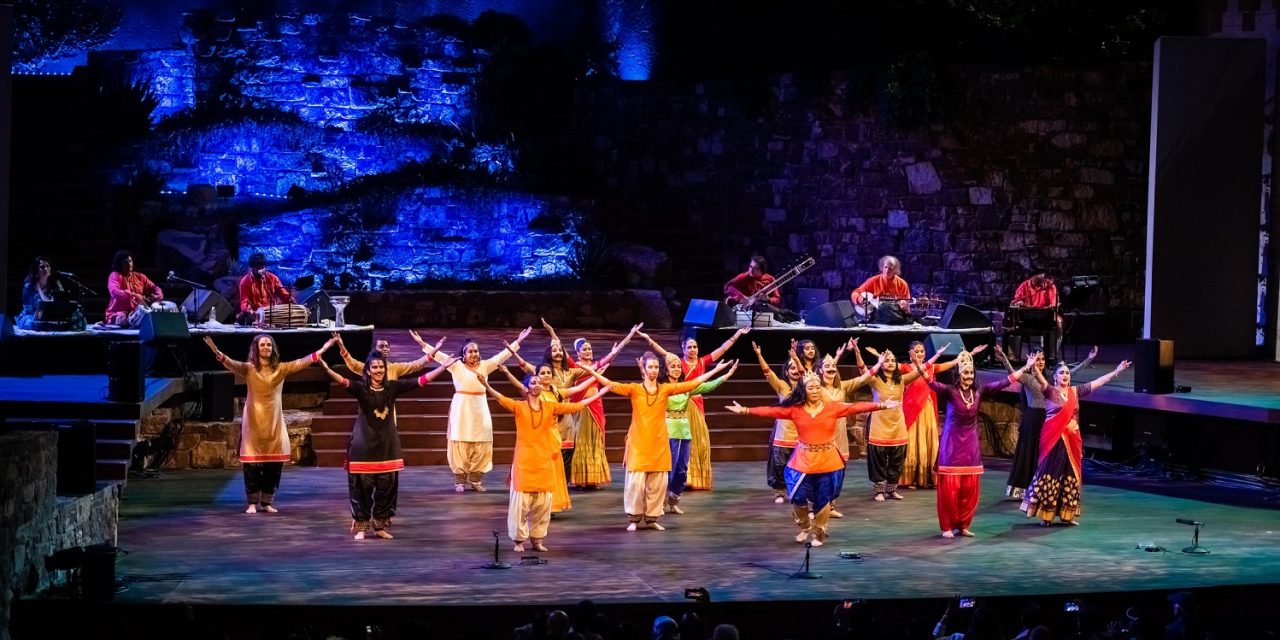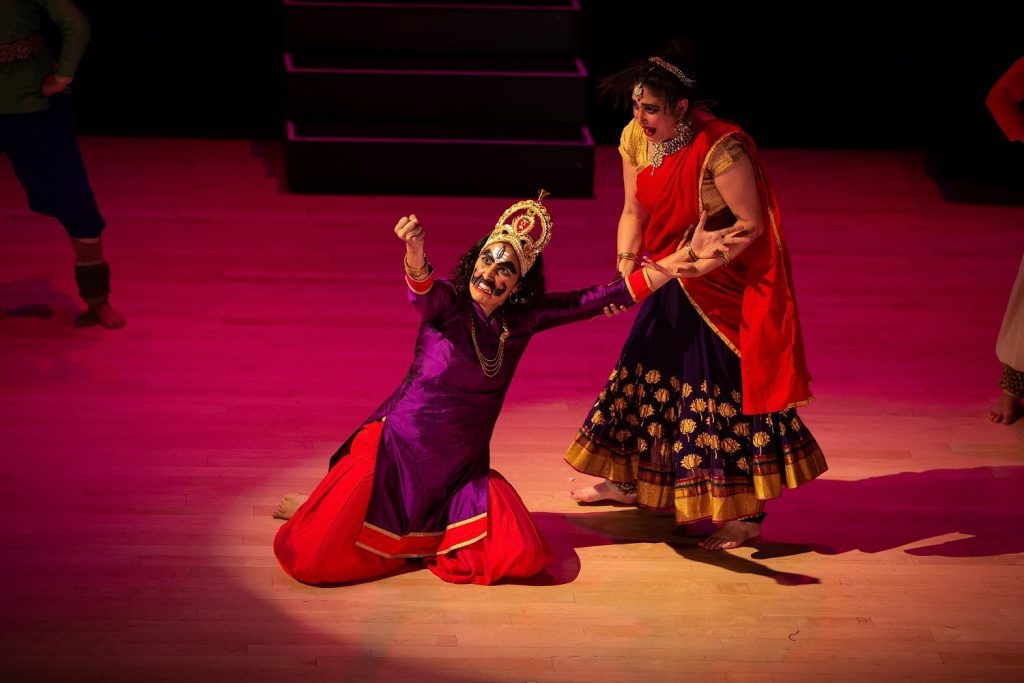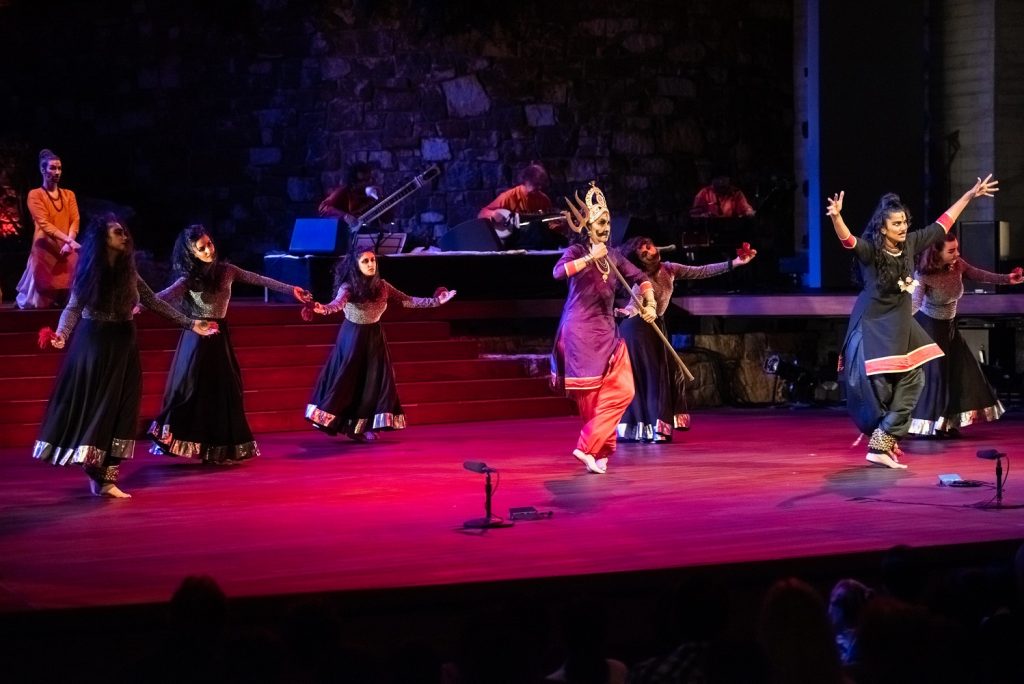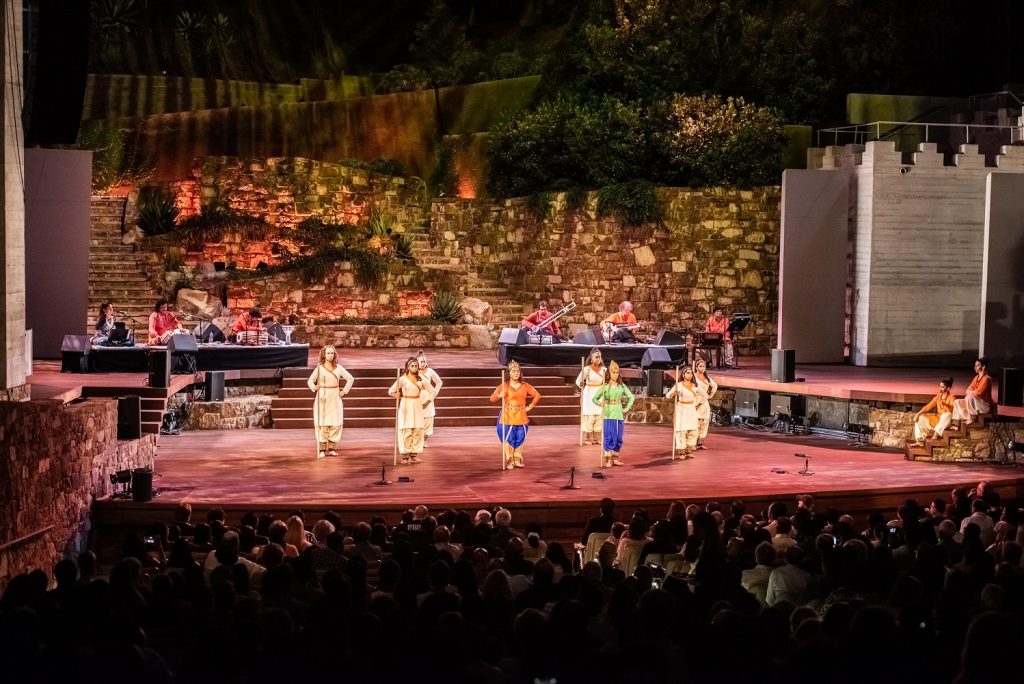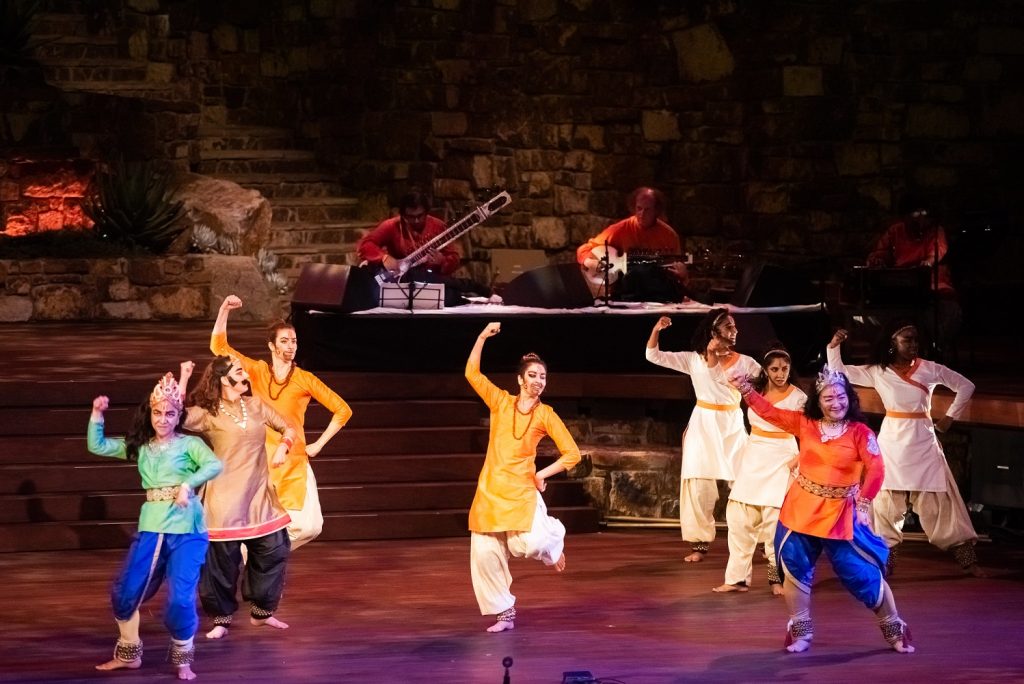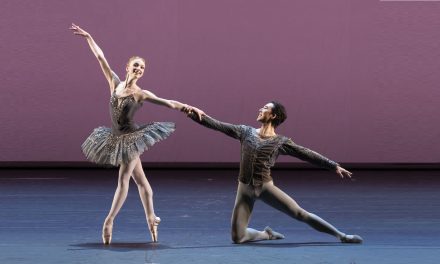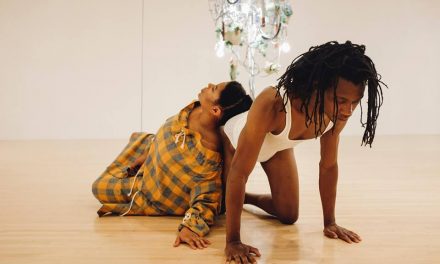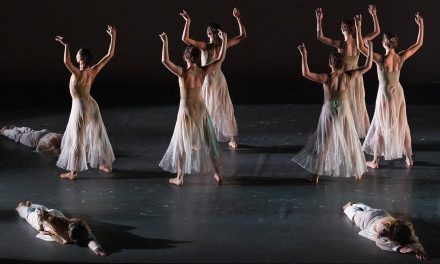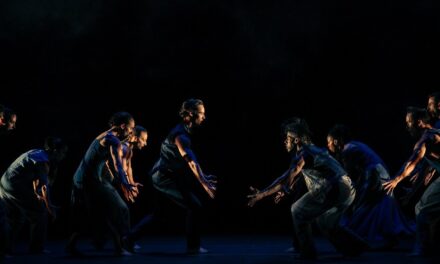The John Anson Ford Amphitheater was the perfect outdoor setting for Leela Dance Collective’s Son of the Wind. After a series of hot days, it was a pleasure to feel the cool of the evening drift in as the magic of Kathak came alive before the audience. The exquisite backdrop was the natural hill with delicately lit tall, wispy trees, and the dramatic stage lighting was especially effective in the natural darkness.
To quote the program for the evening: “Kathak is one of the eight major classical dances of India and among the most dynamic theater arts in the world. The word kathak is derived from katha and means the art of storytelling. It is also synonymous with the community of artists known as kathakas, whose hereditary profession was to narrate history while entertaining. With dance, music and mime, these storytellers of ancient India would bring to life the great epics of ancient times, including the Ramayana – the monumental tale which also inspires this evening’s performance.”
It is important to note that historically, performances of this type of dance drama were made by male artists, including the female roles. Son of the Wind was performed by women. The colorful symbolic costumes, stylized makeup and hair made for easy identification of the type of character. Each dancer chose to convey the personality and gender of their role through expression and the quality of their movement.
The narration was just enough to propel the story for those who were not familiar with the epic fable. Each musical artist was introduced as they settled into their places on a dais above and on either side of the stage. Their arrangement made a delicious frame for entrances and exits above the main stage area. Most important, they established the rhythms that carried the drama and the dance. There was a riveting period of vocalization that brought the drama to a new pitch. The audience was nearly breathless listening to find out what would happen next.
Ironically, the internationally renowned band Earth, Wind and Fire was playing across the road at the Hollywood Bowl. We heard a cheer go up from the Bowl as the music began on the Ford stage. However, from that second, we reveled only in the ancient earth, wind and fire of Kathak.
Earth – the ground – was felt in the dance patterns that rarely left the floor. The footwork was rhythmic, detailed and strong. A hallmark of this dance is the counterintuitive stillness in the torso when the feet are beating out lengthy rhythm patterns. Long swift sequences of turns were experienced as whirling, but never took flight. Powerful gestures radiated up from the earth to the sky. Moments when a group laid upon the floor were still, but not inactive. When we experienced the rare leap, it was as though a gust of air came across the stage. The landing brought us back to earth.
Wind – the hero of the evening’s story was Hanuman, son of the Wind God Vayu. The program began with a youth ensemble dancing and acting out the story of young Hanuman. We learned about his amazing powers, embodying both strength and humility. We then learned of his mission to rescue the Princess Sita, who has been kidnapped and held hostage. His ability to fly with the wind allows him to find her, and his ingenuity allows him to shift his tack as the situation demands.
Fire – the music, the rhythms, the dancing, the facial expressions, the battles, the death scenes – all were performed with fire. Some were expressed as licking flames, and others felt like hot coals.
The founding members of Leela Dance Collective Rina Mehta, Seibi Lee, and Rachna Nivas, along with Seema Mehta were outstanding and they regaled the audience with mastery of their art. Each of them has dedicated themselves to the history and form of Kathak, and each has a personal mission of service through education.
Seibe Lee expressed every dimension of the character of Hanuman. We saw a faithful warrior, an imp, and a creative soul-searcher.
Rina Mehta was regal and sinister as Ravan. The strength of her posture and gesture was not hard, yet it was imposing.
Shefali Jain was spicy and strong as Sugreev. Her facial expressions were perfectly exaggerated and her focus to the audience was penetrating. Her quick agility complemented her grounded stance.
Seema Mehta was electrifying Mahiravan, King of the Underworld. Her manner of standing and moving carried a sense of weight, and her gestures – subtle or grand – reached to the back of the theater without ever overextending from the center of her body.
The company was a true ensemble, focused on the very detailed nature of their work. There were a few occasions when a tiny detail like the position of the chin affected the presentation. A couple of the soldier/warriors bore their chins slightly forward, which suggested a touch of yearning or effort, rather than the determination represented by those who held their chins in line by lengthening the neck. These dancers are still honing their craft, and admirably.
The Artistic Directors of Leela Dance Collective have chosen an ambitious mission, to honor ancient traditions and bring them forward, made relevant to the present. There is no question that they are successful. They collaborate with world-class musical artists, highly skilled theater technicians, and dancers at different stages of their artistic lives. They engage in deep study and intensive training. All of these practices contribute to the creation of vivid, powerful, expansive dance and drama.
Cast (in order of appearance): Pallavi Salvi, Sonali Toppur, Rina Mehta, Seibi Lee, Shefali Jain, Rachna Nivas, Sarah Morelli, Cimeron Ahluwalia, Joanna Meinl, Ria DasGupta, Ahana Mukherjee, Poonam Narkar, Navneet Bal, Seema Barua, Mimixa Patel, Monika Ramnath, Santrupti Margad, Ayanna Kannan, Carrie McCune, Chandana Srinivas, Seema Mehta
Musicians: Kalinath Mishra (tabla), Debashish Sarkar (vocals, harmonium), Jayanta Banerjee (sitar, composer), Ben Kunin (sarod), Satyaprakash Mishra (pakhawaj).
Production Manager/Sound Design: Dave Robertson, Sound Design: Neal Skacel
Written by Mary Pat Cooney for LA Dance Chronicle, September 18, 2019
To visit the Leela Dance Collective website, click here.
To visit the John Anson Ford Theatres website, click here.
Featured image: Leela Dance Collective’s Son of the Wind – Photo: Lindsey Best

